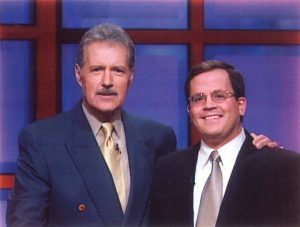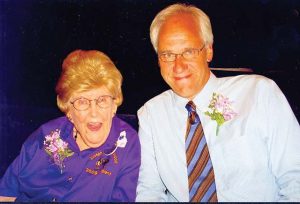
Gary Rue was in his 9th grade algebra class in Tracy, Minnesota, in September of 1964 and the fellow sitting behind him was beating a constant rhythm on his desk. Annoying, right?
Not to Rue. He turned around and said, “Hey, do you want to start a band with me?”
“Sure, why not?” said Steven (known as Tilly) Thielges. And by 1965, Rue (playing his father’s gold Harmony guitar) and Tilly (who had a snare drum) had been joined by Denny Morgan, also of Tracy (with his red Harmony guitar), and Mike Burt from Marshall on a Sears Silvertone bass guitar. They practiced in Rue’s garage, a true “garage band” of that era. The band nervously played its first gig in the nearby Currie town hall on June 17, 1965, and made $13.64 each. They were hooked.
Rue had been hooked on music from the beginning of his life. His mother, Helen, used to wake Rue and his sister, Cindy, singing, “Oh, What a Beautiful Morning!” His father, Wilbur, was the co-owner of Rignell Hardware in Tracy, but Wilbur was a guitar-playing musician at heart. Rue started piano lessons when he was in third grade. When he changed the notes of Mozart and Chopin and kept on playing by ear, he was set free from that. He played cornet in school. But Rue can tell you the exact day he was inspired to spend “every spare minute” learning to play his father’s guitar: “I picked up the guitar the day after the Beatles came.” The Beatles made their first American TV appearance live on The Ed Sullivan Show on Feb 9, 1964. Seventy-three million people tuned in. Though his father taught him a few chords, Rue had a natural aptitude for the instrument. As Rue explains it, “I was way out in front of the curve all the time. It’s what I wanted to do and I was a sponge, soaking it all up.”
While Rue took to the guitar, he did not adopt the famous mop top of the Beatles because, “It wasn’t school policy to allow that kind of a haircut. They’d drag us into the office all the time, they’d slap two fingers above our eyebrows and if it was over those two fingers, we had to go get a haircut.” The faculty at his school did not encourage musical emulation of the Beatles, either, as it was “considered a little bit radical.”
Rue, a Northfield resident since 2011, told me his band played 1965 to mid-1966 in the Tracy and Marshall area with the name P.J. and the Sleepers. Rue explained that the name came from a baby raccoon he had taken from a nest at the family lake cabin. He named her Priscilla, with the nickname P.J. He does not remember how the band came up with the name Sleepers. (When anyone asks about his current rock group Sleepers, he uses the definition of “something that unexpectedly achieves success.”) His band in the ’60s would take the raccoon to some of the shows and “she’d stand on top of one of the PA speakers and just dance around frenetically while all this noise was going on.” Eventually she returned to the woods, leaving her rock and roll days behind.
Rue had seen two dynamic show bands, the Seven Sons and the Fabulous Flippers from Lawrence, Kansas, at the Blue Moon Ballroom in Marshall, with whites and blacks playing together. That was “a real shock for Southwest Minnesota,” Rue said. Rue was inspired by their dance steps, horns, backup singers and their overall sound. To emulate this type of music, in the spring of 1967, Rue’s band added Randy Drager of Marshall, who had a Vox organ, to let them create soul music in the vein of Sam and Dave, James Brown and Wilson Pickett.

Shortly thereafter, promoter Don Madison of Mankato signed on as their booking agent. Rue told me that Madison changed the name to the Sensational Sleepers, introduced some dance steps for them, “talked us into buying suits and wearing the same outfits and had us wear wigs whenever we played so our hair was longer.” Madison would also give them cigarettes to hold as props to make them look more mature.
Madison got them jobs outside of Minnesota. One memorable evening in Iowa, the band played two proms in one night in Algona and then at an all-nighter in Bancroft but needed a lift from prom parents when stranded in between by a flat tire. When they participated in a Battle of the Bands in Ft. Dodge, Iowa, their soul music renditions sparked two African Americans to ask them, “Are you sure you guys are white?” They also played the Beatles, Doors, Young Rascals, Mitch Ryder and the Detroit Wheels and other music of that time to audiences in Wisconsin, at the Air Force Base in Grand Forks, N.D., the Bemidji Armory and towns in eastern S.D.
In the summer of 1967, the band participated in a Battle of the Bands in Rochester. The Sensational Sleepers, competing against 45 bands from the area, Minneapolis and northern Iowa, placed first in showmanship and second in music. Rue said, wryly, “We always had an issue with the judges, because the hometown boys won it,” a group called the Downchilds. In the fall of 1967, the Sensational Sleepers recorded two 45 rpm songs in Rochester for Don Madison’s MAAD label, Hey Girl and Do You Feel It? In all, 1,000 copies were made and sold at appearances. Rue has one left.
The band broke up in 1968, as Randy Drager left the keyboard for football and Dennis Morgan took off to launch a performing and songwriting career which landed him in Nashville. There Morgan hooked up with Charley Pride and Barbara Mandrell and has written for Rod Stewart, Aretha Franklin, George Michael and many others.
Rue graduated from Tracy High School in 1969. Today, Rue believes the Sensational Sleepers performed in the golden age of pop music. It was a creative time, with songwriters familiar with masters like George and Ira Gershwin through exposure to recordings in their homes. “People really, really knew how to write back then,” said Rue, and they felt free to experiment, such as changing time signatures in the middle of songs. Rue considers today’s music to be “all absolutely money-driven in its formula, very flattened-out, inspiration-wise,” with the cultural landscape shifting to a very corporate environment.
Rue spent a couple semesters at Southwest State University in Marshall, leaving in the wake of the tumultuous Vietnam protests and shooting of students at Kent State University on May 4, 1970, when Southwest failed striking students. At Southwest State, Rue met Curt Almsted (later to be known by the stage name of Curtiss A). Rue has played since 1993 in the annual tributes to John Lennon which Curtiss A produces at the First Avenue nightclub in Minneapolis every year on Dec. 8, the anniversary of Lennon’s death.
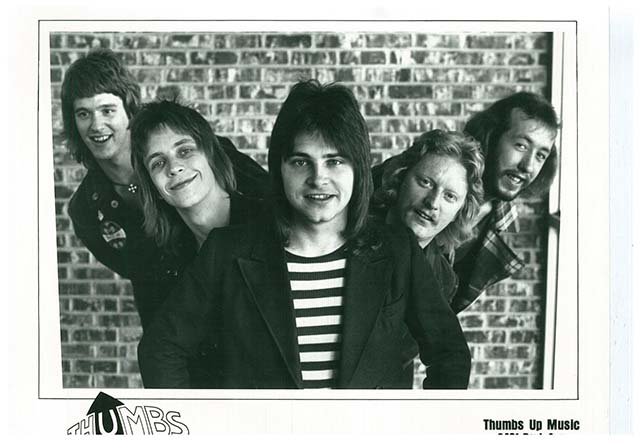
Rue played with Almsted in the band Wire from 1970 to 1973 and, in 1974, Rue joined Almsted in Thumbs Up, a five-piece band with two guitars, two drummers and a bass, including his former bandmates Tilly and Mike Burt. This band found a home at the CC Tap, now called the CC Club, at 2600 Lyndale Ave S. in Minneapolis and played every night but Sunday for five hours during the winter of 1974, “sort of the house band there.”

Rue and Tilly started a band in Minneapolis in March of 1976 called Nip ‘n Tuck, with Jeff Willkomm on bass, then added Terry Isachsen on guitar, to play what Rue calls “not quite mainstream pop, like Todd Rundgren and Steely Dan, things like that.” This band garnered good reviews, but ended in October of 1978.
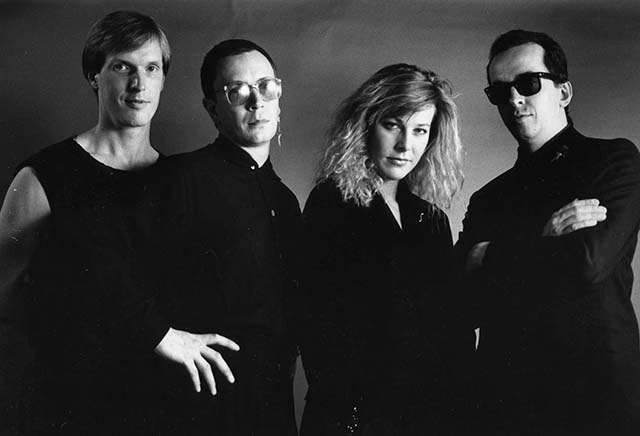
A highlight of 1979 was a USO tour of the Caribbean by Rue and Tilly, followed by the formation of another band in 1980 called Rue Nouveau. Pop star Elvis Costello became a fan of the group which consisted of Rue, Leslie Ball, Willkomm and Bradley Gilbo. Costello brought Rue’s song Everyone to Nick Lowe of the UK, who recorded it on his Columbia Records album, The Rose of England, in 1985. Rue Nouveau broke up in 1986.
In June of 1987, Rue got a phone call from Jack Thibault, who had been the manager of Nip ‘n Tuck and was now manager of pop star Gene Pitney. Pitney (who was later inducted into the Rock and Roll Hall of Fame in 2002) had 16 top 40 songs in the U.S. in the 1960s, including Town Without Pity, The Man Who Shot Liberty Valance and Only Love Can Break a Heart (see below). Knowing his affinity for Pitney’s music, Thibault asked if Rue could put a band together quickly and come out to Warwick, Rhode Island, where Pitney was scheduled to perform in one of several east coast summer tent shows. An incident with the bus of Pitney’s musicians had soured them on touring and had led them all to quit. Rue told me that it took about a week for him to assemble a 12-piece band, all from Minnesota, and get out them all out to Rhode Island by bus. Rue played bass with this band and then guitar the following year. In 1989, he was asked to take over as Pitney’s North American music director. Rue also played piano, arranged songs and was Pitney’s duet partner.
Rue said the high point of his years with Pitney was playing Carnegie Hall with a 20-piece band in front of a sell-out crowd on Feb. 26, 1993, despite the fact that the World Trade Center had just been bombed (for the first time, before Sept. 11, 2001). Rue asked stagehands what had happened and they said, “That’s downtown, this is uptown, don’t worry about it.” Rue said the low point was playing on a Parks and Recreation flatbed trailer in the rain in Miles City, Montana. Among other highlights: an outdoor concert in Boston before 15,000 people in 1994 and a successful engagement during the last days of the Stardust Casino and Hotel in Las Vegas in 2003.
Pitney died from a heart ailment at the age of 66 in his hotel room on April 5, 2006, while on tour in Cardiff, Wales. Rue said Pitney was still “going strong” professionally at his death. Rue’s last performance with Pitney was at the Kewadin Casino in Lansing, Michigan, on Feb. 14 that year.
Rue’s experience as music leader with Pitney led to contract band leader gigs with the Coasters, the Platters, the Marvelettes and the Shirelles. He had directed the band for the Shirelles in Duluth and Grand Rapids in 1977 and did so again at Grand Casino in Hinckley two years ago, with Beverly Lee as the only original singer left from this popular ’60s girl group.
Rue told me that he had started songwriting in earnest in the early 1970s. Helen Reddy recorded his Lost in the Shuffle in 1989 and Prudence Johnson sang Tell Me Lies on Garrison Keillor’s Prairie Home Companion in 2004. The 2006 CD Songs of SteppingStone Theatre: No Picnic Being Cheese and Gary Rue: Show Up and Shoot from 2008 feature various artists and showcase the diversity of his songwriting.
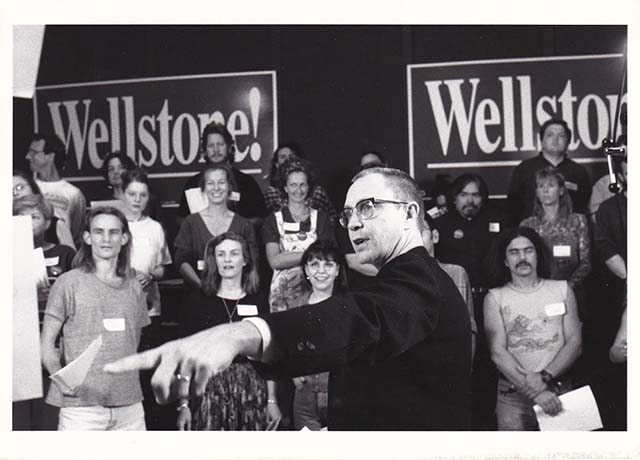
Rue has a wide range of pop, country, jazz, classical, light opera and lounge singing influences, all of which enable him to do a variety of work on commission. In 1994, Rue was engaged to do the song campaign for the Mall of America, with the slogan, “There’s a place for fun in your life.” In 1996, he wrote the music for Paul Wellstone’s Senate campaign song, We Can Do Better (lyrics by Leslie Ball and Marian Moore), and he directed a band and about 100 singers in a recording at Creation Audio of Minneapolis.
Rue is noted for his work in theater, which he said dates back to 1981 when he complained to his roommate at the time, David Goldstein, that he was tiring of playing music in bars. Goldstein, who was director of the Actors Theater in St. Paul, said, “Well, I have a friend who is opening up a new play here in about three months and he needs some new music written, so how would you like to do that?’ Yes, Rue said he would like that. His first show was writing music for A Careless Love by John Olive, who has gained fame as an award-winning playwright. Rue then did a lot of work with the Illusion Theater in downtown Minneapolis, thanks to co-producing directors Michael Robins and Bonnie Morris. Rue also composed the music for Amazing Grace in 1984-85 in which National Public Radio tracked one of the first AIDS couples.
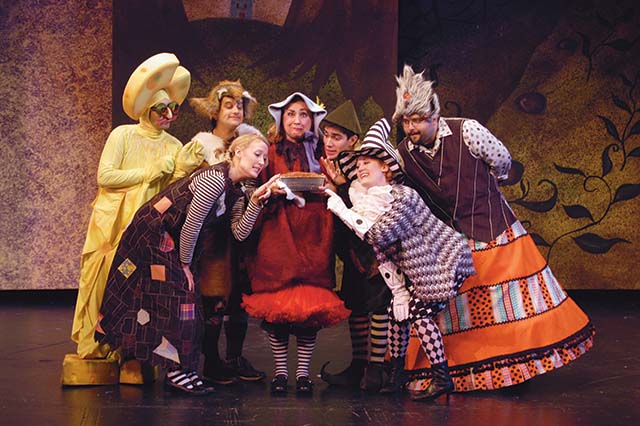
Then in 1994, Rue got a call from Steppingstone Theatre for Youth Development at 55 Victoria St. N. in St. Paul to finish a show of an absentee composer. Since then, Rue has done around 40 shows for them as composer-in-residence. Rue said he takes a rough draft of words from playwrights and “I mold them and change and tweak and push and pull and make them into a lyric for a song” and then he writes the music for it. Examples of such songs are It’s No Picnic Being Cheese, Good to Be a Goat, Stepsisters and Cinderella and Enjoy Us While You Have Us. In 1998, Stinky Cheese Man by Kent Stephens, with music by Rue, was commissioned by SteppingStone and has been performed in theaters across the U.S., including the Dallas Children’s Theater, which took the show on a national tour in 2006 and even to Shanghai for an international children’s theater festival.
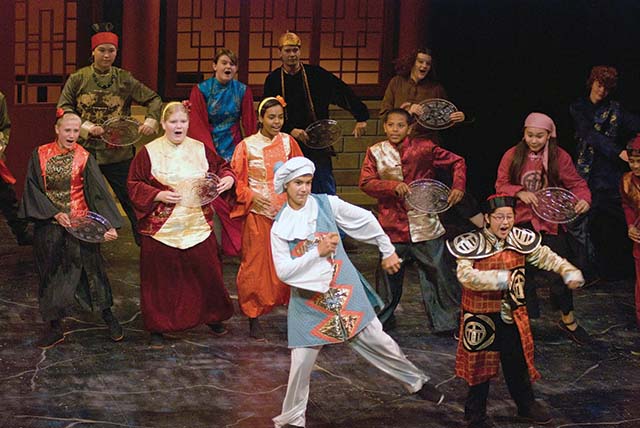
Rue estimated that he has been creator or co-creator of close to 90 musical theater scores, with more than 2,000 regional, national and international performances. At St. Paul’s History Theatre (30 East 10th St.), he has been music director for Buddy! The Buddy Holly Story three times and won an Ivey award for Twin Cities theater for that role in 2011. In 2009, Jerry Allison and Sonny Curtis of Holly’s band, the Crickets, attended a performance and gave it their stamp of approval.
In 2010, Rue was inducted into the Minnesota Music Hall of Fame, the same year Rue and the Sensational Sleepers were put into the Mid-America Rock and Roll Hall of Fame.
Rue wrote the music and lyrics of Chopin’s Heart (with book and additional lyrics by Dan Pinkerton), a comic-tragic musical set in 1939 in Warsaw, Poland, which premiered last month, May 15 and 16, at Open Eye Figure Theatre in Minneapolis. It resulted from a $10,000 Minnesota State Arts Board grant and he considers it his best work yet. He is currently working on music for Dan Pinkerton’s adaptation (book and lyrics) of Charles Dickens’ Hard Times.
Rue has been an adjunct instructor of songwriting, Creating Music Theatre and Music Business at McNally Smith College of Music in St. Paul since 2007. He has a son, Tyler, and two granddaughters, Hailey (11) and Kira (8).
Rue’s current Sleepers rock band was formed in Northfield in 2012 and now consists of Rue on guitar, Northfield’s Gordon Oschwald on bass, Tilly (from Plymouth) on drums and Gary Gratz (from Elk River) on keyboard and guitar. (Member Victor Johnson died last February of cancer at age 59, after participating along with Rue at an emotional John Lennon tribute at First Avenue on Dec. 8.)
The new Sleepers, formed in 2012, play here at Bloomington Arts in the Park in the summer of 2013. (Left to right) Gordon Oschwald, Victor Johnson, Tilly and Gary Rue. Tilly and Rue have played together on and off for almost 50 years. Courtesy Gary Rue

This 2008 CD showcases Rue’s songwriting skills. Yes, that’s Rue on the cover.
Rue also teams up to play with his partner in music and life, Northfield native Laura MacKenzie (featured in Historic Happenings of June 2013). They play traditional Irish/Scottish music, with Rue on guitar and MacKenzie on all the wind-powered instruments of that genre. Rue said this music is “way outside” his comfort zone, but he likes the challenge and does his best to “accompany her and support what she does musically” in the “stunningly melodic” songs and tunes. Rue told me that once he met MacKenzie in 2007, “everything else was off the table,” the attraction was instant. They moved from St. Paul to her hometown in 2011. Both appreciate the small town environment and cultural benefits of living in a college town. Rue is also glad that his “favorite trout stream is 30 miles away.” Rue said fly fishing ranks third, after writing music and performing, as a favorite thing to do.
Rue has created a website, MusicalsForYoungAudiences.com, to license and publish theatrical works for young people for which he has written the music in collaboration with a wide variety of well-known playwrights. Currently 29 titles are available, with more to come. For further information about Rue, check out NewMusicArts.org, which represents both Rue and MacKenzie, and garyrue.com.
“I am still discovering Gary’s amazing performance and arranging skills, along with his deep and diverse legacy of composition, though we’ve been together for almost eight years! From his many delightful musicals for youth (appropriately challenging!) to leading a ’60s beat boom rock ‘n’ roll band (he knows all the RIGHT cool chords and harmonies – a rare thing!) to conducting a stage orchestra from the piano while beautifully crooning ALL the songs of a Gene Pitney review show (how does he know ALL those songs – I never hear him practice?!) to composing and producing a new musical evocative of a 1940s Warsaw cabaret (wow!) to stepping out with solo shows of his own brilliant pop songs (played with virtuosic guitar stylings) to accompanying the traditional Irish and Scottish music of my life’s work with his fresh, unique, highly creative yet totally supportive guitar and vocal work (in a genre new to him!), I am accustomed to being stunned. And he’s a super nice guy to boot.”
– Laura MacKenzie
Gary Rue Remembers Gene Pitney
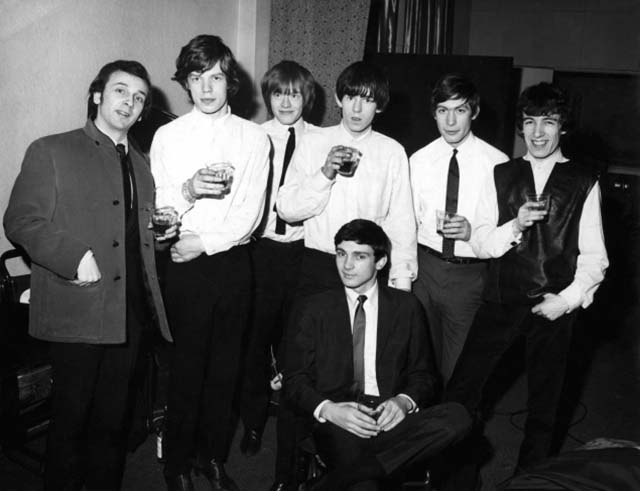
One of the albums which Gary Rue remembers loving most in his youth was Gene Pitney’s Greatest Hits. He could hardly have imagined that years later he would be working with his idol. Rue first played with Pitney in 1987 and became his North American music director from 1989 until Pitney’s death in 2006.
Pitney was one of the most prolific artists of the 1960s, scoring 16 Top 40 songs in the U.S. from 1961 to 1968 (four in the top ten) and even more in the United Kingdom into the 1970s. A native of Connecticut, Pitney became a successful songwriter early on, with hits for Bobby Vee (Rubber Ball) and Rick Nelson (Hello Mary Lou) in 1961. Rue told me, “I was in his office with him when Hello Mary Lou crossed the one million play mark for radio which means you get double the royalty for air time every single time it gets played. And, so uncharacteristic of him, he let out this big ‘WHOOP!’ and jumped up and down when the phone call came in about it.”
Pitney’s first Top 20 single (reaching #13) was his emotional rendition of the theme song for the 1961 movie Town Without Pity, starring Kirk Douglas. Pitney performed the nominated song at the Academy Awards of April 9, 1962 (Moon River won the Oscar for best song).
Rue noted that Pitney was “the first purveyor of Burt Bacharach/Hal David tunes,” even before Dionne Warwick. Rue’s own music has been influenced by the “Brill Building” era, which refers to the Manhattan offices and studios where such legendary tunesmiths as Bacharach/David, Carole King/Gerry Goffin, Jerry Leiber/Mike Stoller, Neil Diamond, Paul Simon and Pitney himself plied their trade. Among the Bacharach/David songs that Pitney recorded are The Man Who Shot Liberty Valance (#4 in 1962), Only Love Can Break A Heart (#2 in 1962, behind He’s a Rebel, a song written by Pitney for the Crystals) and 24 Hours from Tulsa (#17 in 1963).
Pitney became an international star, often touring 11 months of the year at home and abroad. He was inducted into the Rock and Roll Hall of Fame in 2002. Rue described Pitney as being “an absolutely fabulous professional to work with,” not egocentric at all. Pitney was a “spit and polish” performer, “honest and fair.” Rue said Pitney put on a “solid show,” which ranged from simply singing Harry Belafonte songs with an acoustic guitar to having full orchestral accompaniment. Since Rue was a sometimes scrabbling working musician, he told me that he appreciated “show biz as it should be,” with limousine rides, hotel suites, not having to pick up “one single bag, guitar or suitcase,” all of which “allowed us to relax, just think about the music and blow ‘em away.” Pitney was in tune with Rue’s feelings, as well, and they became friends during their long association.
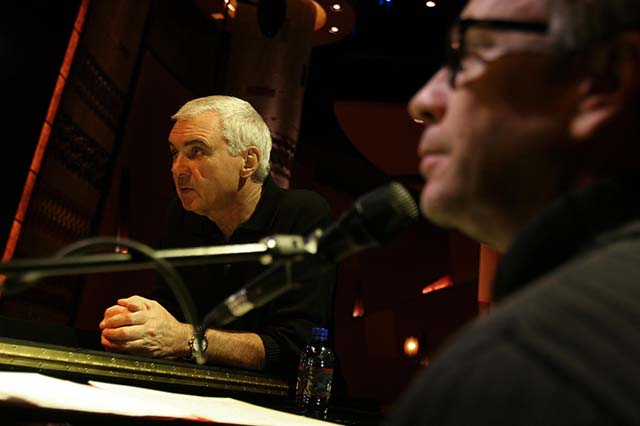
Asked to describe Pitney’s distinctive voice, Rue said, “Well, three octaves, for one thing, which was really quite amazing.” Carole King had written a song for Pitney called Every Breath I Take. When Pitney died in 2006, Rue said, she was playing at Radio City Music Hall. She got to one note that was really high, stopped playing the piano and said, “We’ll leave that one for Gene, I can’t hit it.”
Rue said, “It was a distinct honor to have performed with Pitney for all those years, arguably the highlight of my life in show business, and I still miss him dearly.”



